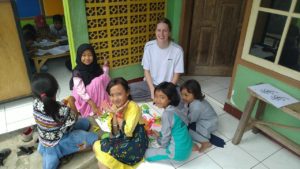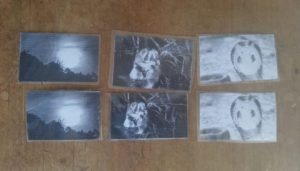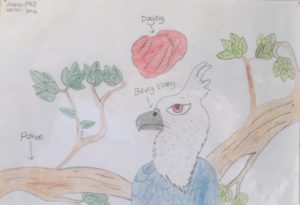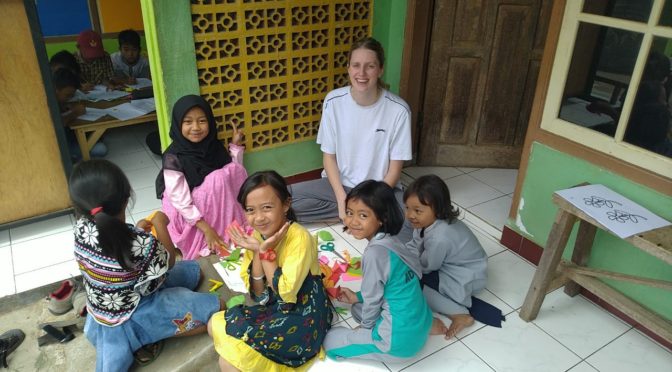When I arrived in Java, I came with the intention of inspiring children to care for their local biodiversity; I would do this through teaching an understanding of the benefits of biodiversity to humans via ecosystem services.

Prior to my arrival, I designed a curriculum which intended to educate on pollinators and seed dispersers’ positive role in agriculture and forest regeneration. It is predominantly action-orientated learning, containing a range of activities that aim to reinforce key points. It contains activities that accommodate a variety of learning styles (kinetics, visual, logical, auditory) to have maximum impact on knowledge, attitudes and behaviour. Upon implementing the pre-test at the LFP Nature Club, I quickly realised that there was a lack of knowledge as to which animals lived in Java’s forests and which lived abroad. There was no knowledge of gibbons, but lots regarding orangutans, elephants and lions. Taking this into consideration, I decided that before I tried to encouraged students to care for their local biodiversity, it was necessary to ensure students were aware of the animals that live in the forests local to them.
This last week has been spent educating LFP Nature Club students on Javan biodiversity. We (Willi, Arina, Layla and myself) developed photo identification cards of Javan animals which the students could explore themselves. On the back of each card, the animals name, habitat, diet and a fun fact were listed in Bahasa Indonesian. We showed the students each photo and explained the information about each animal. To reinforce the information, we developed a game. I have quickly learnt that the formal lecturing style commonly used in the UK is difficult to impose in Nature Club. Instead, the students react well to a short burst of information in the first 10/15 minutes of Nature Club followed with an hour of games that reinforce the information learnt. We therefore developed pairs of the animals photos to be used in a game of Memory. In order to gain the point once a pair has been found, the student must name the animal, and provide insight into its habitat, diet and an interesting fact if possible. If necessary, we provided hints to prompt the students memory, but if it was clear the student did not know, the teacher explained the animal to the group and put the pair back into the game providing another chance for a correct identification. If the students did not want to play the game, they were instructed to draw a Javan animal of their choice and to consider their habitat and diet.

The game was a clear success! It engaged the students in learning for over an hour. New students were constantly arriving to the game, wanting to play. If students had missed the first 15 minutes of information via the teachers, students could learn from one another as they saw one another trying to recall the information in order to win the point or the teacher had the opportunity to explain the information to the student when they could not identify the animal. The success of the game encouraged the creation of more focusing specifically on Javan primate ecology. Two more memory games were created. One to educate about the nocturnal Javan Slow Loris and another to educate about the durinial Javan suili, Javan lutng and Javan gibbon. The photo pairs consisted of the primate, diet, habitat, and interesting facts . For example, the loris pack included a photo of the moon, insects, tree gum, calliandra, bamboo forest, and a cobra. The cobra educated about loris predators as well as how the Javan slow loris has evolved patterns in its fur to camouflage itself as a dangerous cobra helping it avoid predators.
An end of week questionnaire revealed a good understanding of Javan animals and their general ecology. This gives me confidence in moving on to the role of Javan biodiversity in providing essential ecosystem services, next week. I intend to explore the use of more games in the LFP Nature Club setting as determining which activities are most effective at attracting and retaining attention, as well as improving learning will be valuable to future LFP Nature Club education as well as wider conservation education.


